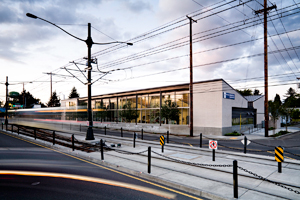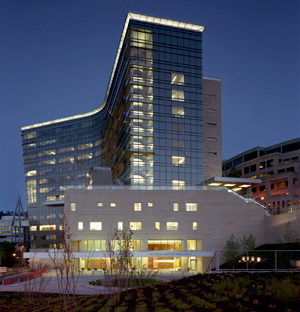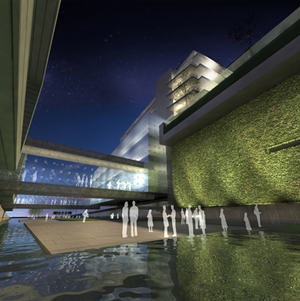


Oregon seems to be leading the way in the design of sustainable, innovative, and visually compelling healthcare facilities. Selected from nearly 100 entries, two of the three winners of the 2009 National Healthcare Design Awards, presented by the AIA’s Academy of Architecture for Health, are hospitals in Portland.
Announced on July 28, the AIA selected one winner in each of the following categories: Category A–built, less than $25 million in construction costs; Category B–built, more than $25 million in construction costs; and Category C–unbuilt. The awards program is now in its second year.
The following members served as jurors for the 2009 awards: Stephen Yundt, AIA, of CO Architects, Los Angeles; Julie Snow, FAIA, of Julie Snow Architects, Minneapolis; Rand Elliot, AIA, of Elliott & Associates Architects, Oklahoma City; Rolf Haarstad, AIA, of Hord Coplan Macht, Inc., Baltimore; Tom Howorth, AIA, of Howorth Architects P.A., Oxford, Mississippi.
2009 National Healthcare Design Awards
Category A: Less than $25 million
Providence North Portland Clinic
Portland, Oregon
Mahlum
Located on the mass-transit MAX line in Portland’s urban core, Mahlum’s clinic engages the busy streetscape through an expansive wall of windows that visually connects the interior and exterior spaces. The focal point of the interior design is a series of three murals created by local artist Caleb Freese that can be seen by patients and their families within the building, as well as those passing by on the street. Three day-lit clinical pods serve as hubs between waiting rooms, examination rooms, and doctors’ offices, providing points of connection between families and caregivers. Built on a brown-field site, the building not only revitalizes the neighborhood through transparent architectural forms, but also through its environmental considerations.
Category B: More than $25 million
Oregon Health and Science University, Peter O. Kohler Pavilion
Portland, Oregon
Perkins + Will in joint venture with Peterson Kolberg & Associates
Positioned on a hilltop with complex topography, Perkins + Will’s Oregon Health and Science University serves as a campus centerpiece, visible from downtown and several bridges across the river. The new building takes advantage of the picturesque Oregon landscape with south-facing curtain walls that reveal dramatic views of Mt. Hood. On the northern façade, punched windows in the brick and stone provide views to the historic heart of the campus. The 75-foot terrain drop across the site allowed the concealment of a 450-car parking garage built below a reconstructed street. The pavilion’s “pedestrian superhighway” on the ninth floor of the 400,000-square-foot facility links patient care and research zones, and harbors a new aerial tram terminus.
Category C: Unbuilt
Cancer Research Institute
Unbuilt
HKS, Inc. in joint venture with UHS Building Solutions
This unbuilt design integrates scientific discoveries and technological advances in cancer research with treatment facilities for cancer patients. Overlooking a river in the Northeast United States, the design provides an unparalleled combination of clinics, a full-service hospital, and research labs. To connect all of these buildings, HKS incorporated water pathways that link the separate programmatic elements together and eventually flow back into the nearby river. Glass walkways between the buildings float above the waterways, creating transparent forms that further link the architecture to the site.


